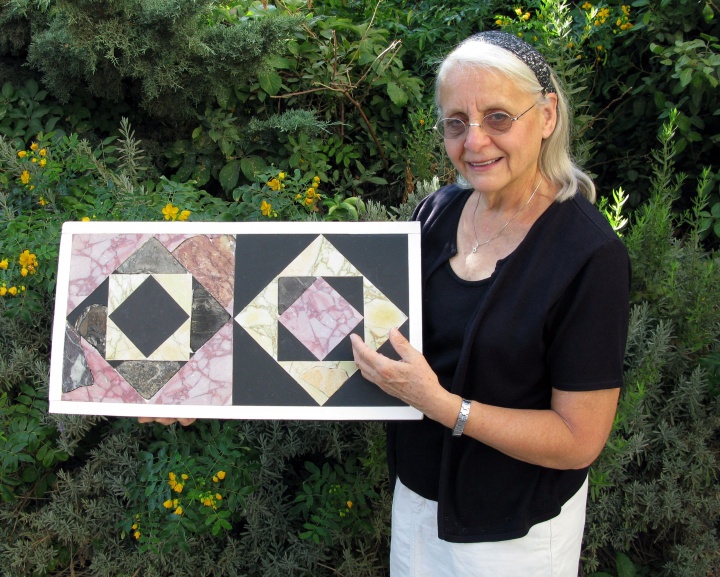God, Science and the Bible
Found - Remnants of the Temple From Jesus Christ’s Day?
Downloads
God, Science and the Bible: Found - Remnants of the Temple From Jesus Christ’s Day?

During His ministry on earth, one of the places Jesus Christ regularly taught was at the temple in Jerusalem, with its massive complex of buildings, chambers, colonnades and porticos begun by Herod the Great (the same Herod who tried to kill Jesus as an infant at Bethlehem).
The Gospels record that Jesus regularly taught there when He traveled to Jerusalem. Luke 19:47 says of Jesus, “He was teaching daily in the temple.”
After His death and resurrection, the temple remained the focal point for the early Church, with members “continuing daily with one accord in the temple” (Acts 2:46). “Peter and John went up together to the temple at the hour of prayer,” at which time they healed a lame man, amazing the crowds (Acts 3:1-11). Although their teaching led to the apostles being beaten and thrown into prison, “daily in the temple . . . they did not cease teaching and preaching Jesus as the Christ” (Acts 5:40-42).
The temple proper—a small part of the enormous 35-acre complex—was off-limits to all but the priesthood, but the surrounding courts were thronged by thousands of worshippers, a number swelling to a million or more at the annual religious festivals of Passover, Pentecost and the Feast of Tabernacles. Surrounding the courts and bordering the entire complex, massive 100-foot columns supported huge colonnades where worshippers could find shade from the hot Jerusalem sun. Jesus and the apostles likely taught in areas like this.
The entire temple complex was renowned for its beauty and the exquisite workmanship of its construction. On one of Jesus’ last visits to the temple, one of His disciples exclaimed, “Teacher, see what manner of stones and what buildings are here!” (Mark 13:1). Others “spoke of the temple, how it was adorned with beautiful stones and donations” (Luke 21:5). The temple was no doubt a magnificent sight!
Fast forward some 40 years to A.D. 70. The Jews, having rebelled against the Roman occupiers several years earlier, were surrounded and besieged in Jerusalem. The temple complex, with its massive walls and elevated position above the city, was a key defensive position for Jewish fighters. After a long siege the Roman legions broke through, and the Temple Mount itself became a battleground.
Rome’s might prevailed. The Jewish population was slaughtered or sold into slavery. The temple itself was destroyed, as were all the beautiful and elaborate halls and porticoes atop the Temple Mount. By the end, the entire top of the Temple Mount had been razed into oblivion. As Jesus had foretold, not one stone of the temple and its beautiful surroundings stood atop another (Matthew 24:2).
The Temple Mount lay abandoned for years. There is some historical and archaeological evidence of a Roman shrine to Jupiter and a Byzantine church being built atop the giant platform where the temple once stood. Most Jews who returned to Jerusalem refused to set foot there lest they inadvertently step where the Holy of Holies of the temple had been—an area forbidden to all but the high priest.
Fast forward another six centuries. The armies of Islam, having captured Jerusalem in 638, constructed the Dome of the Rock on the Temple Mount in 692 in the area where Herod’s temple had stood. Except for a brief period of control by the Crusaders from 1099 to 1187, the Temple Mount would remain under Muslim control to this day.
In recent decades, officials of the Palestinian Authority have denied that a Jewish temple ever stood on the Temple Mount, in spite of the obvious Herodian-period architecture of the remaining platform and various temple-related artifacts and inscriptions discovered surrounding it. While the Temple Mount is one of the most archaeologically significant locations in the entire world, the Muslim authorities who control the area have ardently resisted any attempted scientific exploration of the site.
Starting in 1999, Muslims who control the Temple Mount embarked on efforts that seem designed to erase any physical evidence that might remain of Herod’s temple on the spot. Over three days they brought in heavy earthmoving equipment and bulldozed an estimated 400 truckloads of dirt and debris from the Temple Mount while carving out a huge underground mosque, dumping the material in a nearby valley. Little did they know that in doing so, they would inadvertently bring to light remnants from Herod’s temple complex not seen for almost 2,000 years!
Some Israeli archaeologists, recognizing where the dumped material came from, established what came to be known as the Temple Mount Sifting Project to painstakingly examine every minute particle dumped from the illegal construction. Over the years since, volunteers from all over the world have sifted out thousands of artifacts ranging from clay pottery and lamp fragments to jewelry to coins to religious medallions that had been lost and become buried on the Temple Mount over the centuries.
Then, in September 2016, archaeologists unveiled their most intriguing finds to date—a series of elaborate stone floor tiles that likely adorned the courtyards and porticoes surrounding Herod’s temple before its destruction when the Romans invaded.
“This represents the first time that archeologists have been able to successfully restore an element from the Herodian Second Temple complex,” stated Zachi Dvira, co-founder and director of the Temple Mount Sifting Project in a Sept. 9 press release. “It enables us to get an idea of the Temple’s incredible splendor,” added Dr. Gabriel Barkay, co-founder and co-director of the project.
The stone tiles were created in a style called opus sectile, Latin for “cut work.” The technique, never seen in the Holy Land before the reign of Herod the Great (who had earlier lived in Rome and was a great fan of Roman architecture and engineering), involved cutting and polishing colored stone pieces and cementing them in geometric patterns. Similar floors were laid in some of Herod’s other construction projects, including his palaces at Jericho, Masada and Herodium.
“The tile segments were perfectly inlaid such that one could not even insert a sharp blade between them,” said Frankie Snyder, a researcher for the sifting project and expert in flooring from the Herodian period. So far approximately 600 colored stone floor fragments have been recovered, more that 100 of which date to the time of Herod’s temple.
These tiles may be what the first-century Jewish historian Flavius Josephus referred to when he described the temple courtyard as being “completely paved with stones of various types and colors.” Later the Talmud described the temple complex as having rows of colored stones.
Leen Ritmeyer, archaeologist and likely the world’s foremost expert on the Temple Mount, suggests that the pieces were originally part of ornate floors in some of the other buildings and/or from the many colonnaded areas surrounding the temple itself.
“Now, as a result of Frankie Snyder’s mathematical skills, we have succeeded in recreating the actual tile patterns,” said Dr. Barkay. “This represents the first time that we can see with our own eyes the splendor of the flooring that decorated the Second Temple and its annexes 2,000 years ago.
“Though we have not merited seeing the Temple in its glory, with the discovery and restoration of these unique floor tiles, we are now able to have a deeper understanding and appreciation for the Second Temple, even through this one distinctive characteristic.”
